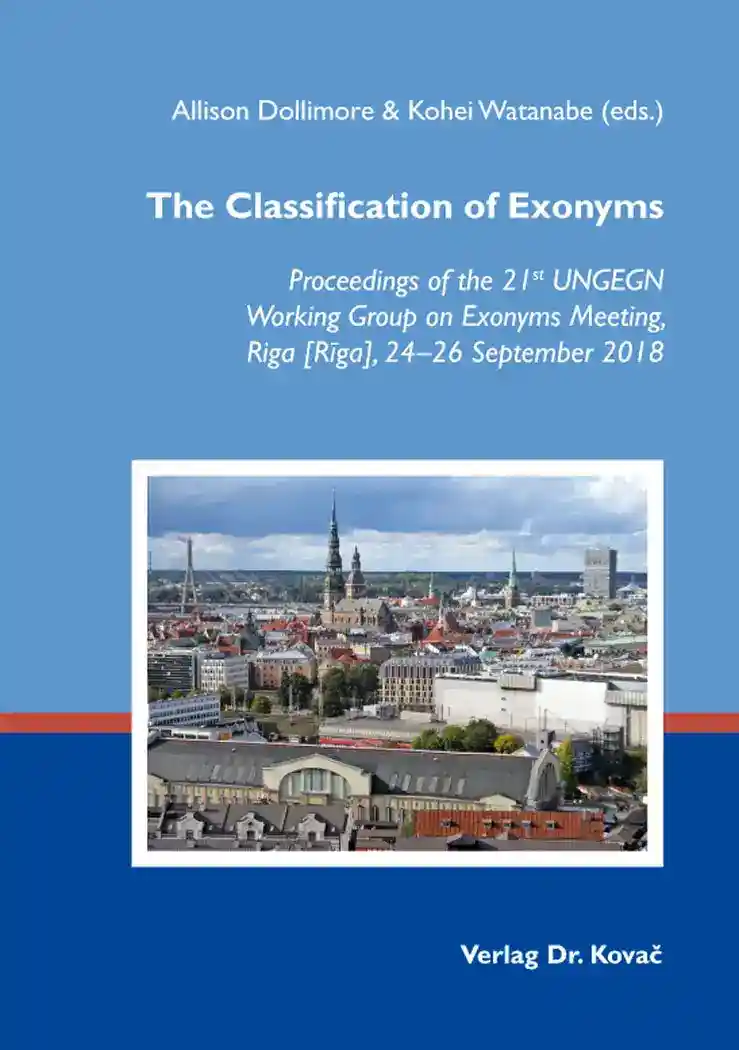Allison Dollimore & Kohei Watanabe (eds.)The Classification of Exonyms
Proceedings of the 21st UNGEGN Working Group on Exonyms Meeting, Riga [Rīga], 24–26 September 2018
Name & Place – Contributions to Toponymic Literature and Research, Band 8
Hamburg 2019, 212 Seiten
ISBN 978-3-339-11122-7 (Print)
ISBN 978-3-339-11123-4 (eBook)
Rezension
[…] Insgesamt versammelt dieser Band erneut eine Reihe hochinformativer Beiträge aus aller Welt zum Bereich „Exonyme“, die sämtlich lesenswert sind.
Zum Inhalt
Exonyms involve the adaptation of geographical names from a donor language into a receiver language, and they reflect the fascinating movement and interaction of peoples around the world. The Working Group on Exonyms of the United Nations Group of Experts on Geographical Names (UNGEGN) was established by resolution VIII/4 of the 8th UN Conference on the Standardization of Geographical Names. This resolution recognised that “...measures such as the categorization of exonym use ... would help in the reduction of the number of exonyms”. Thus “The Classification of Exonyms” was chosen as the main topic of the 21st meeting of the working group, held in Riga in September 2018. This volume, which is the 8th in the series “Name and Place”, contains 17 papers presented at the 21st meeting. Whether or not they lead to a reduction of exonyms, these papers should contribute to a better understanding of the nature of exonyms that are used in the world.
The first section begins with a paper providing an overview of past deliberation in UNGEGN and the various attempts on the categorisation and classification of exonyms, and organises them into eight categories. Other papers in this section investigate the categorisation of Slovenian, Estonian, and East Asian exonyms. The first two papers in the second section consider the chronological aspects of exonyms. The following papers in the section highlight questions regarding the classification of exonyms, the challenge of expressing names from the Baltic States in Arabic, and names in Antarctica. The final section includes a paper from Latvia describing the country’s richness in microtoponyms and oikonyms, as well as two papers with reference to Nubia that provide a philosophical viewpoint on the nature of geographical names.
